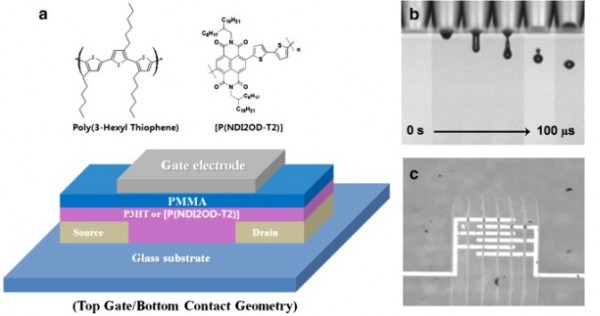Effect of gate electrode conductivity on operation frequency of inkjet-printed complementary polymer ring oscillators
- 저자
- Hyun Han, Paul S.K. Amegadz, Jongwoon Park, Kang-Jun Baeg, Yong-Young Noh*
- 저널명
- Thin Solid Films, 546, 141-146 (2013)
- 년도
- 2013
- Link
- http://dx.doi.org/10.1016/j.tsf.2013.04.060 434회 연결
[Abstract]
We report the effect of the conductivity of the gate electrode on operation speeds in printed organic ring oscillators (RO). The highly conducting gate electrode leads to a superior oscillation frequency (as high as ~ 30 kHz) for the printed ROs. Above the optimum thickness of the gate electrodes (~ 30 nm), inkjet-printed p-type poly(3-hexylthiophene) (P3HT) and n-type poly([N,N-9-bis(2-octyldodecyl)naphthalene-1,4,5,8-bis(dicarboximide)-2,6-diyl]-alt-5,59-(2,29-bithiophene)) (P(NDI2OD-T2)) organic field-effect transistors showed reasonably high hole and electron mobilities of ~ 0.05 cm2 V− 1 s− 1 and ~ 0.25 cm2 V− 1 s− 1, respectively. Complementary inverters and ring oscillators based on these p- and n-type semiconductor transistors were constructed, where the inverters showed the inverting voltage, (Vinv) near the ideal switching points at 1/2 the drain voltage (VDD), high gain (~ 10), low static power consumptions, as well as high noise margin (~ 60% of 1/2VDD). Finally, printed P3HT complementary ring oscillators with a gate thickness over 30 nm exhibited the highest oscillation frequency (~ 30 kHz).
